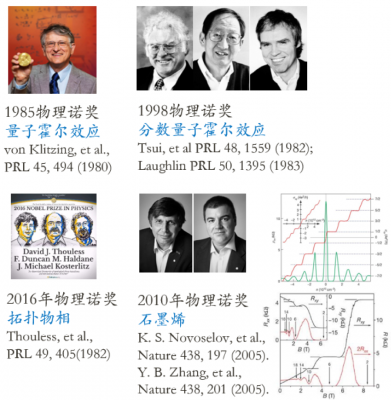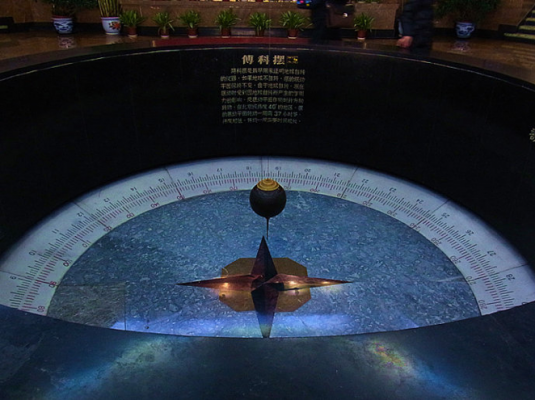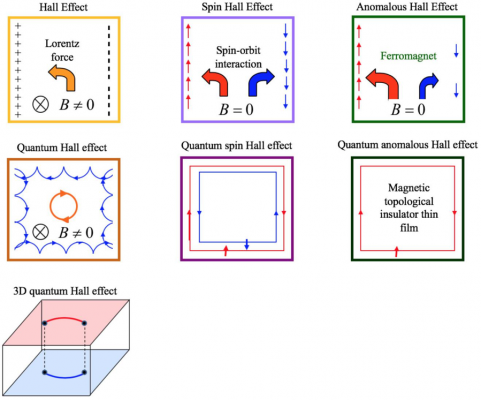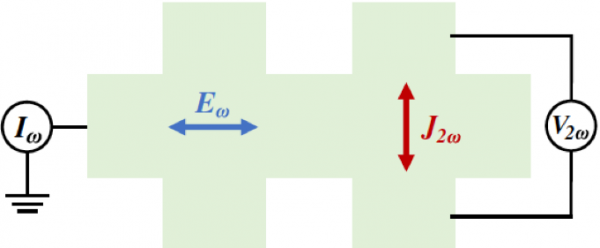Discovered decades ago, the quantum Hall effect remains one of the most studied phenomena in condensed matter physics and is relevant for research areas such as topological phases, strong electron correlations and quantum computing. However, whether the quantum Hall effect can be extended to higher dimensions without simply stacking two-dimensional systems is unknown.
A research group led by Professor Lu Haizhou of the Department of Physics at Southern University of Science and Technology (SUSTech) has made significant progress in the understanding of the nonlinear Hall Effect. The research group saw their paper published Physical Review Letter (PRL), the esteemed journal of the American Physical Society (APS), and further confirmed their work by collaborating with the Massachusetts Institute of Technology in an experiment that was later published in Nature.
The first author of the paper in PRL is Dr. Du Zongzheng and Academician Xie Xincheng from Peking University is a collaborator.

The Hall Effect is the transverse voltage that develops when an electric current passes perpendicularly through a magnetic field. The Hall Effect has always been a mainstream direction in condensed matter physics research with four Nobel Prizes in Physics being won in relation to research into the Hall Effect.

The most important part of studying the Hall Effect has been the study of its geometric phase, which has created many new research directions. The Foucault pendulum is a simple example of a geometric phase and is often displayed in science museums around the world. The geometric phase deals with angular momentum and rotation. Particles generate a magnetic moment, or a level of magnetic strength, when they rotate. If a magnetic field is applied, the particles and electrons will follow the direction of the magnetic field rather than their own magnetic moment. The influence of a magnetic field is referred to as a quantum geometric Hall effect.
Lu Haizhou’s research group of Southern University of Science and Technology (SUSTech) and Professor Xie Xincheng of Peking University had published theoretical work of this nature in PRL. In their paper, they posited the band characteristics for strong nonlinear Hall signals. Their paper argued that either the tilted energy band or the position of the topological inverse band would result in stronger nonlinear Hall Effect signals.

The unique research that the research team, working with the MIT group, developed is discovering that the direction of the particles influenced by the Hall Effect is not always linear. Previous research had applied current in a longitudinal direction and measured voltage laterally. Experiments had filtered and removed noise that was deemed unrelated outside of certain frequencies. The research team decided to try a higher frequency (30 Hz instead of 15 Hz) to measure lateral voltage.

The research team found that the nonlinear Hall Effect was proportional to the Berry curvature dipole. There were two equivalent expressions, with one representing the group velocity on the Fermi surface multiplied by the Berry curvature, and the other representing the first derived sum of all Berry curvatures under the Fermi surface. This new information is a higher-order effect of the Berry curvature, and unique from the linear Hall Effect.
Professor Lu Haizhou’s research team plans to continue their research in this area, as disorder appears to be the main source of anomalous Hall Effects. Since the nonlinear Hall Effect is strongly dependent on disorder from the beginning, the contribution of disorder will be an important area of study.
The authors want to thank many universities and institutions for their support for the two papers. In mainland China, they want to thank SUSTech, Shenzhen Institute of Quantum Science and Engineering, Shenzhen Key Laboratory of Quantum Science and Engineering, Southeast University (Jiangsu Province), Shanghai Normal University, International Center for Quantum Mechanics at Peking University, Collaborative Innovation Center of Quantum Matter (Beijing), National Cheng Kung University (Taiwan Province), and Academica Sinica (Taiwan Province). From overseas, MIT, National University of Singapore, Harvard, Princeton and the National Institute for Materials Science (Japan) were involved in the papers in different respects.
The research published in PRL was supported by the Guangdong Innovative and Entrepreneurial Research Team Program, the National Basic Research Program of China, the National Key R & D Program, the National Natural Science Foundation of China, and the Shenzhen Municipal Science and Technology Innovation Commission.
Proofread ByChris Edwards
Photo ByDepartment of Physics